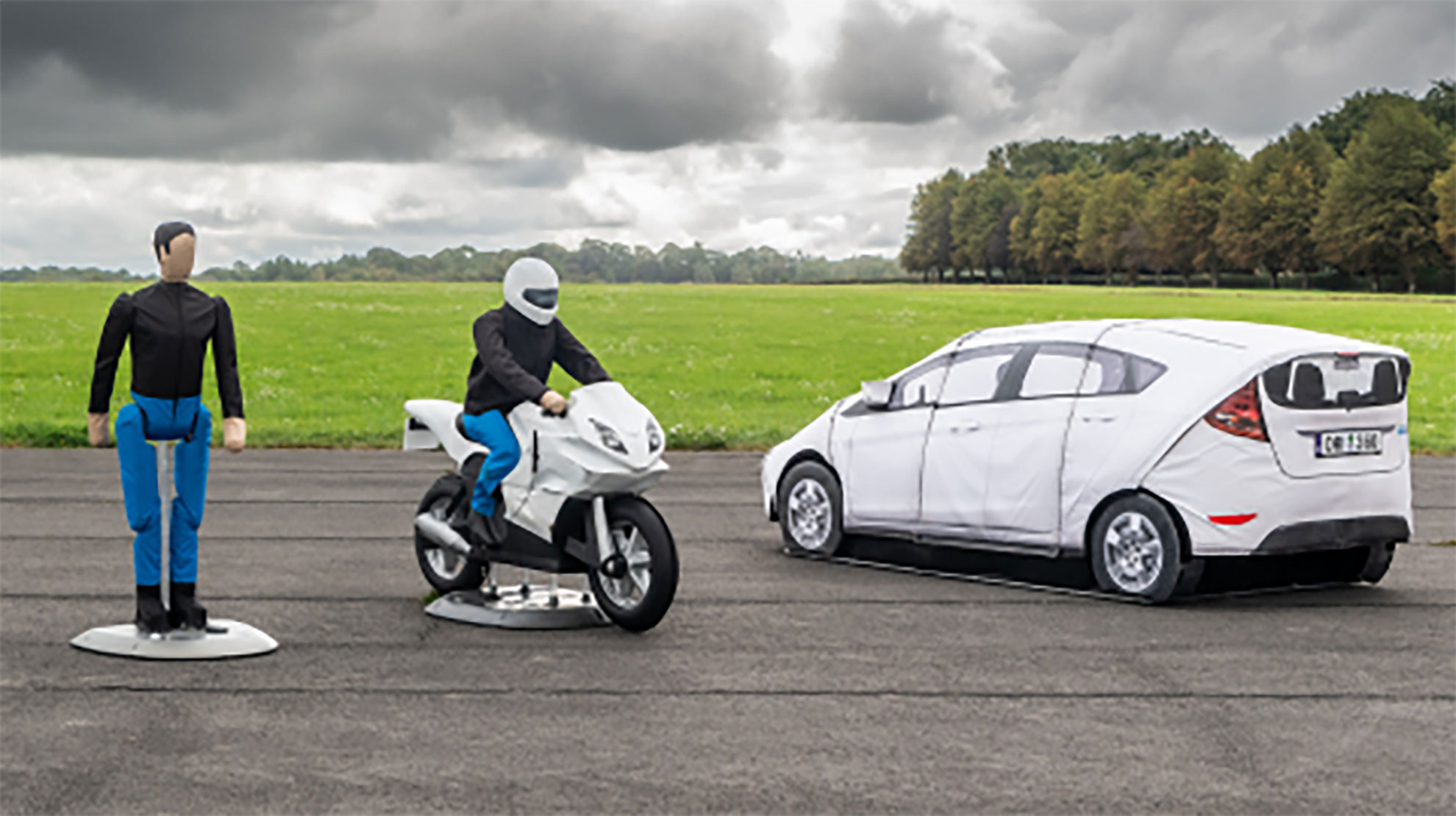One of the challenges of ADAS testing is ensuring you have the right amount of space when creating complex scenarios with multiple vehicles or soft targets. Higher speed ADAS tests require more space.
We've put together a guide of suggested minimum space requirements, so you know exactly how much space you need.

AEB (Autonomous Emergency Braking)
One of the most frequent accidents on European roads is car-to-car rear impacts. These often occur on the open road where traffic comes to a stop and the driver is not paying attention.
Test speeds are defined in two ranges:
- AEB City – 10-50kph
- AEB Inter-Urban – 30-80kph
- Car-to-Car Rear Stationary (CCRs) – collision with stationary target
- Car-to-Car Rear Moving (CCRm) – collision with slow moving target
- Car-to-Car Rear Braking (CCRb) – collision with braking target
Tests scenarios are defined in three categories:
Minimum space:
AEB City CCRs - VUT (50kph), GVT (0kph) = 200m
AEB Interurban CCRm - VUT (80kph), GVT (20kph) = 350m
AEB Interurban CCRb - VUT (50kph), GVT (50kph) = 250m

VUT = Vehicle under test – the vehicle tested according to this protocol with a pre-crash avoidance system on board.
GVT = Global vehicle target – robot controlled low profile vehicle with soft car target such as AB Dynamics' Guided Soft Target (GST)
VRU (Vulnerable Road User)
VRU's include pedestrians, animals, cyclists and motorbikes. Testing involves longitudinal scenarios in which the pedestrian is walking in the same direction as the vehicle and lateral scenarios when the pedestrian crosses the path of the test vehicle. Incidents can also occur in low-light conditions therefore many testing scenarios reflect this.
Minimum Space:
VUT (80kph) = 450m for the fastest longitudinal scenarios
LSS (Lane Support Systems)
LSS assists vehicles to stay in the lane when an inattentive driver unintentionally leaves the lane or changes lane into the path of an overtaking or oncoming vehicle.
LSS includes three active modes:
- Lane Departure Warning (LDW)
- LKA (Lane Keep Assist)
- ELK (Emergency Lane Keeping)
- Road Edge/Lane Edge – vehicle drifts out of lane
- Overtaking (same speed) - side collision with vehicle sitting in blind spot
- Overtaking (8kph relative) – side collision with vehicle slowly overtaking
- Oncoming – head-on collision with oncoming vehicle
Tests include four scenarios:
Minimum Space:
Road Edge LDW, LKA, ELK – VUT(72kph) = 450m
Overtaking (same speed) ELK – VUT(72kph), GVT(72kph) = 450m
Overtaking (8kph relative) ELK - VUT(72kph), GVT(80kph) = 650m
Oncoming ELK - VUT(72kph), GVT(72kph) = 800m

AB Dynamics' GST can reach 80kph in as little as 150m using full throttle but we recommend allowing 200m for good repeatability and test planning.
For braking, the GST can come to a complete stop in 42m (0.6g) but 100m (0.25g) is advised.
The LSS test with oncoming GVT is a higher speed Euro NCAP test that requires the most space due to the GST needing a run-up and then area of steady state speed before impact point.











